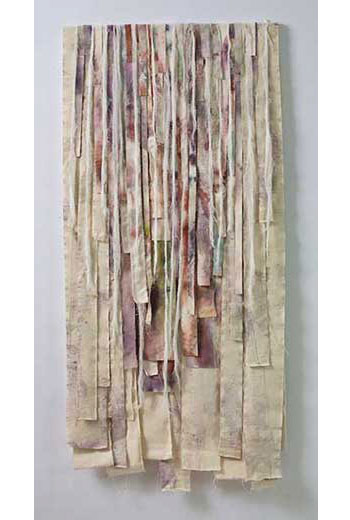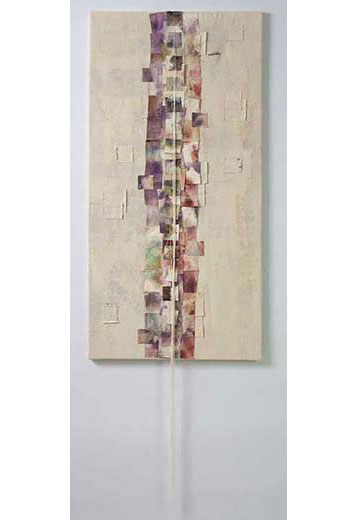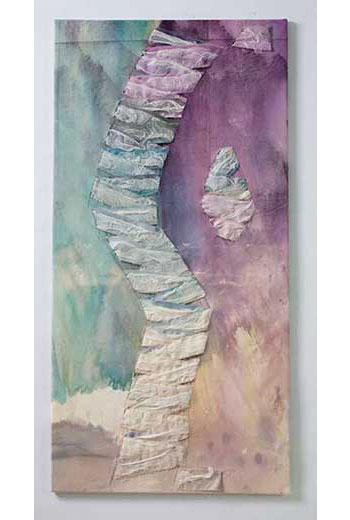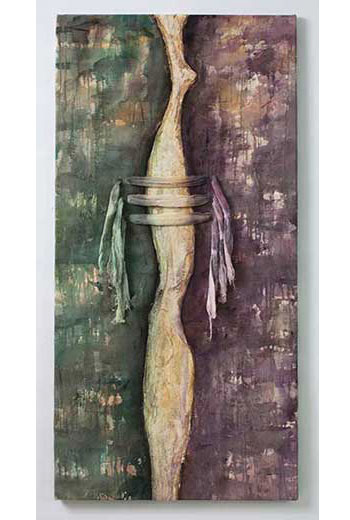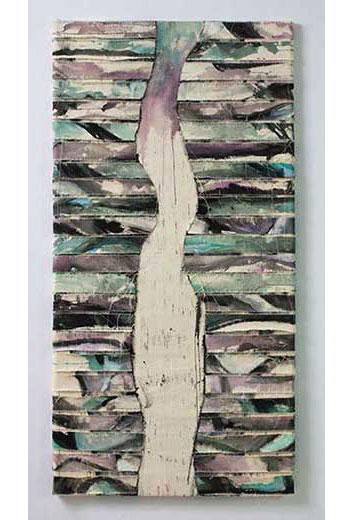- Series Statement
- Untitled No. 1
- Untitled No. 2
- Untitled No. 3
- Untitled No. 4
- Untitled No. 8
- Untitled No. 9
- Untitled No. 11
- Creative Process
Statement on Journey
The fabric of life is stitched with threads from family relationships. Memories tie past to present. Conceptually, the materials and process speak to a journey of rethinking, reconstruction, and re-enchantment.
Using acrylic paint, cotton fiber, and wire mesh, metaphorical and physical elements are melded into semi-sculpted forms. While carefully binding the frayed canvas together with protective gauze and corrosive metal, I reflect on the tapestry of family. Selectively, I reweave sorrow, comfort, and joy and unexpectedly discover healing embedded in the layers.
It is in my studio that I explore the essence of being and create new paradigms for the future. The title of this work, inspired by Maya Angelou’s words, “I wouldn’t take nothing for my journey now” (1993), represents the emergence of a new visual and conceptual language.
Viewers are invited to experience the visual and tactile nature of the work, reflect on their own family relationships, and begin a new journey of unexpected discovery.

Creative Process
The process for this body of work was one of unexpected discoveries. Using a brush on the end of a 4-foot stick, I painted large canvas pieces with thinned acrylic. The canvas, only partially covered with gesso, allowed the pigment to soak through to the backside. Out of sight and out of my control, the surface of the backside of each became a beautiful work on its own. This body of work then became about reveling the backside to the viewer. The stretched canvas and forms facing the viewer originate from the backside of the canvas.


